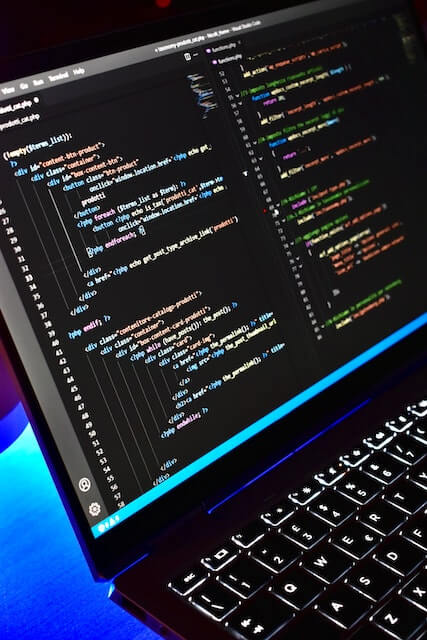
How to Build Your own Remote Software Development Center

When local pools of tech talent are tapped out, a remote software development center becomes a viable way to source software developers.
One of the most significant benefits of this approach is that it comes with the overlapping coverage fostered by the cooperation of two teams operating in different time zones. Located in different regions, your remote and in-house units will clock in 8 hours per day each, which in many cases totals to 16 hours in a 24-hour timeline.

Another notable benefit of this model is its flexibility, especially when it comes to mid-term projects spanning 1-2 years. An offshore development center lets you work with a team for the duration of your project. This eliminates the expenses and efforts associated with HR processes that often arise when disbanding a team upon project completion. Now, let’s review the steps to build your own offshore development center.
Before you begin…
Before you dive into building your own remote development team, it’s important to know why you need it. Is this a question of saving costs, an overfished talent pool, or both? Next, think about the importance of working in the same time zone as a team. Then, consider how complex your project is and if it needs highly skilled talent. And most importantly, do you have the capacity to manage your remote software development center? Once you’ve addressed these questions, you’ll have a better idea of which region to choose for your remote center (in terms of the rates, time zone, talent availability, etc), which collaboration model suits you best, or whether sticking to in-house team is the right choice for you.
Determine the scope of work for your remote development center
Before hiring a remote team, you should define the scope of work for both your internal and remote software developers.
There are basically two approaches to dividing the scope of the project between your units. One approach involves the common work of both branches with full integration of your remote software development team. Alternatively, you can divide the project into components, which each team will deliver independently. The approach you take depends on your project as well as your management style. Regardless of the chosen approach, it’s essential to deconstruct the project into deliverables and set up time frames when you want each part to be delivered. That way, it’ll be easier for you to coordinate the teams, track progress, and measure success.
Another crucial thing is the budget. Software developer rates differ significantly from region to region. A recent Accelerance report shows that launching a remote software development center can lead to significant savings – from 40% to 70% of overall costs. Based on our experience, the rates of remote developers in LATAM and CEE are 2-4 times lower than those in the US, whereas in Western Europe the difference is 1.5-2 times lower.
So, the outcome of this step should include: a defined set of deliverables for both teams, a timeline, and a budget. Based on this input, the provider will take care of sourcing relevant remote software developers that will meet your demands when it comes to skillset, experience, and rates as well as handle the HR processes, equipment setup, and all operational costs.
Define the structure of your remote software development center
Team composition varies for different scenarios. It may consist of several software engineers fully integrated into your workflows, working closely with your internal staff. In this setup, you can communicate with each team member directly.
Alternatively, you might opt for a comprehensive dedicated team approach, akin to a “turn-key” remote software development center. Such a team would involve essential software development roles, including a UX/UI designer, developers, QA professionals, and a project manager who serves as a singular point of contact.

Whichever scenario you choose, our remote software development company will help you build the right team. The entire concept of a remote team for software development is that it allows you to bring in talent you lack in-house. Thus, after you’ve outlined the scope of work, you need to define who will be a part of your remote software development center. That is a necessary step because it’s impossible to start cooperation with a purveyor of tech talent without knowing the roles they need to source to complete your remote unit. The list of skill sets should be based on the type of product you want to build and your vision of the future product.
READ ALSO: When do you Need Full-Cycle Product Development?
Start the candidate selection process
At this step, it’s essential to define whether the team members must operate from a single location. This factor may be critical for hardware and IoT products. In this scenario, the pool of candidates may be limited. On the other hand, you may opt for offshore development teams, which lets you access a broader pool of talent without being tethered to a single location.
How does candidate selection for your remote software development center work? After you’ve chosen the provider of a remote development team, you should establish a clear process for candidate interviewing. We recommend keeping it as concise as possible, including no more than 3 steps. This approach helps prevent frustration among your candidates, especially senior ones, as convoluted interviewing processes may prompt them to go with other options available in the market.

Furthermore, when selecting candidates, not only should your provider of offshore development center services sift through the labor market for relevant candidates, but also pre-screen them for a variety of competencies, including English proficiency, culture fit, and tech skills.
If you decide to set up your remote software development center in Eastern Europe, chances are this step won’t be time-consuming, as the pool of tech talent in this region boasts nearly 1.3 M software developers.
Another popular software development hub, Latin America, is home to 1 million IT experts. Many developers in these regions have years of experience being part of European and North American companies, which means they have solid communication skills and the needed expertise. To be sure of that, all remote software developers that we pre-select for you undergo our internal HR and tech screening process.
At nCube, our clients are always a part of the interviewing process, as it lets them make the right decision when it comes to choosing who they want to add to their team. With that in mind, our clients interview all candidates before they decide whether or not to hire them for their remote software development center. We are always here to coordinate the process of interviews and answer any questions you may have. If you end up approving a candidate, we officially inform them that they are offered a position as a member of your remote software developer team. Essentially, in our model, there are no down payments before you approve the first member of your remote department, as we want you to be sure this model suits you before you commit to it.
Launch your remote development center
So, you hired remote software developers and are ready to put your remote unit to work. To officially launch your remote software development center, we prepare all the necessary paperwork, including signing a Service Level Agreement, Non-Disclosure Agreement, and contracts with your remote software developers.
We recommend signing B2B contracts with your team members as it lets you negotiate a longer notice period, rather than adhering to the standard 2-week notice.
At this step, we aim to make the integration process as smooth as possible, so you can count on our assistance at any time. To that end, we assign a personal account manager to coordinate matters between you and your remote software development team. They will be available for you to contact 24/7.
The onboarding process holds the key to your remote team’s success. It’s important to integrate your new hires into your processes and include them in your internal meetings. This step is crucial for them to feel a part of your team and be more invested in its success. We at nCube help our clients establish the right communications between their internal and remote units.
Benefits of a remote software development company
What do businesses seek when they partner with a remote software development company? Let’s break it down.

Access to vast pools of specialized talent
In the era of tech talent shortage, providers like nCube can be your gateway to much more qualified technologists than you can find locally. Eastern Europe and LATAM combined boast over 2 million software engineers specializing in both generic technologies (JavaScript, Python, Java, etc.) and in-demand skillsets (AI/ML, AR/VR, IoT, Blockchain).
Cost reduction
Trimming unnecessary costs is one of the most expected outcomes of a remote software development center. For many companies, especially startups, building a local team of developers is beyond their means. Studies reveal that in-house hires tend to cost from 40% to 100% on top of their salary. The cost of local hiring is snowballing, as talent acquisition, onboarding, training, employee retention, and administration tend to factor in. Hiring remote software developers is a way to cut back on extra expenses. The vendor typically takes care of team administration, retention, and IT infrastructure.
Shorter time to hire
Launching a remote software development center lets you go outside your “four walls” and add talent from a diverse pool of technologists, for example, Eastern Europe or Latin America that have a total of 2 million ICT specialists combined. Thanks to this, your company can significantly reduce the time required to backfill vacancies.
READ ALSO: Nearshore Product Development: Eastern Europe and Latin America Overview
Simple scaling
If you err on the side of being risk-averse, aremote software development company is the way to go. Scaling your remote unit up and down is easy – you can start with one or two remote software developers to take the approach for a spin and then scale up as you see fit. You can hire more specialists or disband the team if you decide to close your remote software development center. Vendors typically offer flexible engagement models where you only pay for the hours your remote employees invested in your project.
Acceleration of processes
With a potential for around-the-clock development, a remote software development center will help you get overlapping coverage where two teams invest 8 hours of work in a 24-hour timeline. That extra effort will speed up your development process and get you to market sooner. That way, hiring remote software developers helps your business operate around the clock by uniting the efforts of team members from different time zones.
A stable team for the entire project duration
nCube is dedicated to building long-term partnerships by providing teams you can rely on for years. We prioritize high retention rates among our software engineers by investing in their well-being and satisfaction. This includes offering employee bonuses, development plans, competitive salaries, and all the support your team needs. As a result, 86% of our engineers stay on a project from start to finish.
What will your remote software development center look like with nCube?
In a nutshell, it will be your own dedicated development team who will work on your project as if they were the members of your internal staff. It will work with you full-time, 40 hours per week, Monday through Friday. As a client and a leader of your remote software development team, you will have direct access to all team members. Alternatively, you can hire a project manager through us who will run your remote software development center on your behalf.
Our model allows you to have the benefit of managing the processes in your own unique way. Working under your management, your remote software developers will stick to your communication style and adopt your methods of software development. Thus, it can be your own Agile software development remote teams if you’re a proponent of this approach.
The peculiarity (and the biggest benefit) of our model, in our opinion, is that you’ll keep control over everything, from who is going to work on your project(s) to team management and processes. This model allows you to truly embrace Agile software development with remote teams, as you can scale up and down whenever your project needs it. On our side, we at nCube will have your back when it comes to team member retention, providing such services as team building, insurance, HR and tax support, motivation, help setting up IT infrastructure for your remote software developers, and more.

When your team reaches a certain size, we offer to create an R&D center with a separate office, dedicated HR and operations managers. Thanks to this, our remote software development company boasts an average retention rate of 3.5 years, which means most developers endure throughout the lifetime of the client’s project.
Recommended articles


